Ambrosians are members of one of the religious brotherhoods which at various times since the 14th century have sprung up in and around Milan and also a 16th-century sect of Anabaptist Ambrosians.

The Ambrosian Rite, also called the Milanese Rite, is a Catholic Western liturgical rite. The rite is named after Saint Ambrose, a bishop of Milan in the fourth century. The Ambrosian Rite, which differs from the Roman Rite, is used by some five million Catholics in the greater part of the Archdiocese of Milan, Italy, in some parishes of the Diocese of Como, Bergamo, Novara, Lodi, and in about fifty parishes of the Diocese of Lugano, in the Canton of Ticino, Switzerland.

Charles Borromeo was the Archbishop of Milan from 1564 to 1584 and a cardinal of the Catholic Church. He was a leading figure of the Counter-Reformation combat against the Protestant Reformation together with Ignatius of Loyola and Philip Neri. In that role he was responsible for significant reforms in the Catholic Church, including the founding of seminaries for the education of priests. He is honored as a saint by the Catholic Church, with a feast day on November 4.
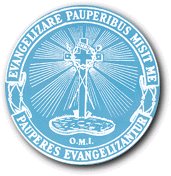
The Missionary Oblates of Mary Immaculate (OMI) is a missionary religious congregation in the Catholic Church. It was founded on January 25, 1816, by Saint Eugène de Mazenod, a French priest born in Aix-en-Provence in the south of France on August 1, 1782. The congregation was given recognition by Pope Leo XII on February 17, 1826. The congregation is composed of priests and brothers usually living in community; oblate means a person dedicated to God or God’s service. Their traditional salutation is Laudetur Iesus Christus, to which the response is Et Maria Immaculata. In 2016, there were 3,924 members.

The Barnabites, formally the Clerics Regular of Saint Paul, are a religious order of clerics regular of Pontifical Right founded in 1530 in the Catholic Church. They may use the postnominal initials of simply "B." or "C.R.S.P.". Associated to the members of the Order are the Angelic Sisters of St. Paul and the lay members of the Barnabite lay movement.

The hierarchy of the Catholic Church consists of its bishops, priests, and deacons. In the ecclesiological sense of the term, "hierarchy" strictly means the "holy ordering" of the Church, the Body of Christ, so to respect the diversity of gifts and ministries necessary for genuine unity.

The Archdiocese of Milan is a metropolitan see of the Catholic Church in Italy which covers the areas of Milan, Monza, Lecco and Varese. It has long maintained its own Latin liturgical rite, the Ambrosian rite, which is still used in the greater part of the diocesan territory. Among its past archbishops, the better known are Saint Ambrose, Saint Charles Borromeo, Pope Pius XI and Saint Pope Paul VI.

The Society of St. Joseph of the Sacred Heart is a society of apostolic life of Catholic priests and brothers headquartered in Baltimore. The members are called Josephites and work specifically among African-Americans.
The term secular clergy refers to deacons and priests who are not monastics or members of a religious institute. A diocesan priest is a Catholic, Anglican or Eastern Orthodox priest who commits themself to a certain geographical area and is ordained into the service of the citizens of a diocese, a church administrative region. That includes serving the everyday needs of the people in parishes, but their activities are not limited to that of their parish.

A society of apostolic life is a group of men or women within the Catholic Church who have come together for a specific purpose and live fraternally. There are a number of apostolic societies, such as the Daughters of Charity of Saint Vincent de Paul, who make vows or other bonds defined in their constitutions to undertake to live the evangelical counsels of poverty, chastity, and obedience. However, unlike members of an institute of consecrated life, members of apostolic societies do not make religious vows—that is, "public vows".

The Catholic Church in Haiti is part of the worldwide Catholic Church, under the spiritual leadership of the Pope, the curia in Rome and the Conference of Haitian Bishops.
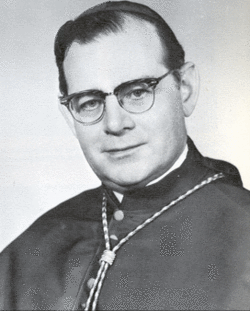
Gerald Francis O'Keefe was a 20th-century bishop of the Catholic Church in the United States. He served as auxiliary bishop for the Archdiocese of Saint Paul in the state of Minnesota from 1961 to 1966 and bishop of the Diocese of Davenport in the state of Iowa from 1966 to 1993.

Karl Kajetan von Gaisruck was an Austrian Cardinal and the archbishop of Milan from 1816 to 1846. He also held the title of Graf or Count.
Father Victor Gnanapragasam O.M.I. was the first prefect of the Catholic Apostolic Prefecture of Quetta, Balochistan, Pakistan.
The Roman Catholic Diocese of Tanjore/Thanjavur is a diocese located in the city of Tanjore in the Ecclesiastical province of Pondicherry and Cuddalore in India.
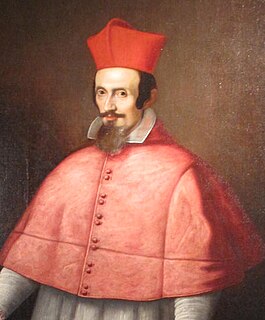
Cesare Monti was an Italian Cardinal who served as Latin Patriarch of Antioch and Archbishop of Milan.

Giuseppe II Pozzobonelli was an Italian Cardinal and the Archbishop of Milan from 1743 to 1783.
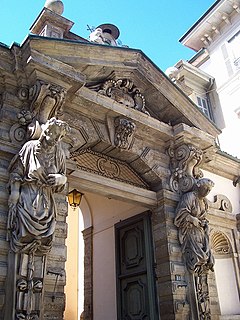
The archiepiscopal seminary of Milan is the seminary of the Archdiocese of Milan.

Filippo Maria Visconti (1721–1801) was the Archbishop of Milan from 1784 to 1801.
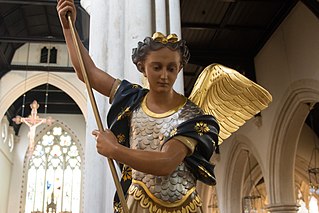
St Mary of the Angels is a Roman Catholic church on Moorhouse Road in Bayswater, London, England, within the City of Westminster. The parish it serves is partly in the City of Westminster and partly in the Royal Borough of Kensington and Chelsea.















